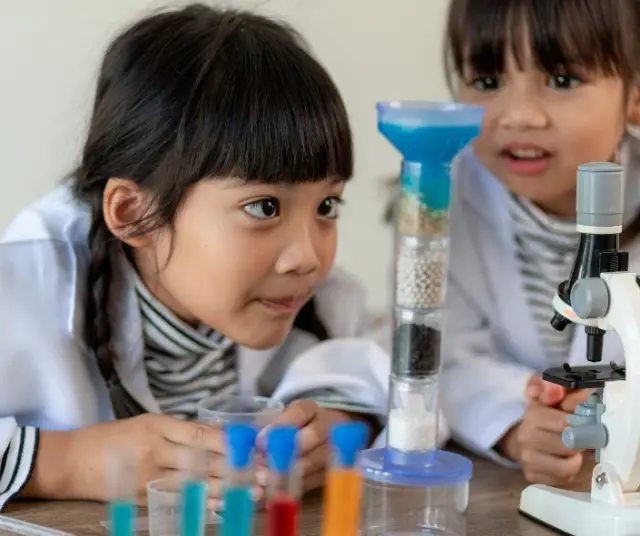Every year, on February 11, the world celebrates the International Day of Women and Girls in Science . This date commemorates the achievements of women and girls in the field of science and technology, and seeks to encourage their participation in these areas. Throughout history, women have made significant contributions to science, despite the barriers and challenges they have faced.
The History of the International Day of Women and Girls in Science
The International Day of Women and Girls in Science was proclaimed by the United Nations General Assembly in December 2015. This date was chosen to commemorate the anniversary of the birth of Marie Curie, one of the most prominent scientists in history. . Curie was awarded two Nobel Prizes in two different scientific fields: Physics in 1903 and Chemistry in 1911. Her legacy continues to be a source of inspiration for women and girls around the world who aspire to a career in science.
The goal of this day is to promote gender equality in science and eliminate gender stereotypes and biases that often discourage women and girls from pursuing scientific careers. It also seeks to increase the visibility of women in science, who have historically been underrepresented in scientific and technological fields.
The Barriers Faced by Women in Science
Despite advances in gender equality in recent decades, women still face numerous barriers in science. Some of the most common challenges include:
Gender stereotypes: Stereotypes that associate science with "masculine" skills often discourage girls and women from pursuing scientific careers. These stereotypes can begin at a young age and continue throughout life.
Lack of role models : Women who have made important contributions to science often do not receive the recognition they deserve. The lack of female role models can discourage girls from pursuing careers in science.
Gender discrimination: Women in science often face gender discrimination in the workplace, which can hinder their career advancement and ability to conduct quality research.
Inequality in representation: Women are underrepresented in scientific and technological fields, resulting in a lack of diversity in decision-making and research.
Work-life balance: The demands of working in science can often conflict with family responsibilities, making it more difficult for women to pursue a scientific career.
Celebrating the Achievements of Women in Science
Despite these barriers, women have made outstanding contributions in a wide variety of scientific fields. Throughout history, notable women have left their mark on science, and their achievements deserve to be celebrated.
One of the most influential figures in the history of science is Rosalind Franklin, a British biophysicist and chemist. Her work was instrumental in understanding the structure of DNA, although she has often been overlooked in favor of her male colleagues. His research contributed greatly to the discovery of the double helix structure of DNA, an advance that revolutionized molecular biology.
In the field of astronomy, Vera Rubin carried out pioneering research on dark matter and the rotation of galaxies. Despite the difficulties she faced as a woman in a male-dominated discipline, her contributions were fundamental to our understanding of the cosmos.
Marie M. Daly was the first African American woman to earn a doctorate in chemistry in the United States. His research on enzymes and proteins has had a lasting impact on biochemical and pharmacological science.
These are just a few examples of outstanding women in science, but there are many more whose achievements deserve recognition. International Day of Women and Girls in Science is an opportunity to celebrate these achievements and highlight the crucial role that women play in science.
The Future of Science and Gender Equality
As we move into the future, it is essential to continue working to promote gender equality in science. This involves addressing the barriers that women and girls still face and fostering an inclusive environment in research and innovation.
Here are some ways we can work together to forge a more equal future in science:
Inclusive education: We must encourage inclusive education that encourages girls to explore their interest in science from an early age. This includes eliminating gender stereotypes in the classroom and promoting female role models.
Support for women in science: Academic institutions and companies must provide strong support for women in science. This includes equal pay policies, equitable parental leave and career development opportunities.
Visibility and recognition: It is essential to highlight the contributions of women in science and ensure they receive the recognition they deserve. This includes celebrating awards and honors for outstanding women scientists.
Mentoring and networks : Mentors and support networks are vital to the advancement of women in science. Mentoring programs can provide guidance and support to women scientists at all stages of their careers.
Promoting diversity: Encouraging diversity in research is essential for innovation. Including different perspectives and experiences in science enriches the field and leads to more complete and effective solutions.
International Day of Women and Girls in Science is an opportunity to reflect on past achievements and look to the future. We celebrate women who have overcome barriers and contributed significantly to science, and at the same time, we reaffirm our commitment to promoting gender equality in research and innovation.
The path to gender equality in science may be challenging, but it is essential for the progress of humanity. By removing the barriers that women and girls face in science, we can harness the full potential of the scientific community and solve the most pressing challenges of our time.
